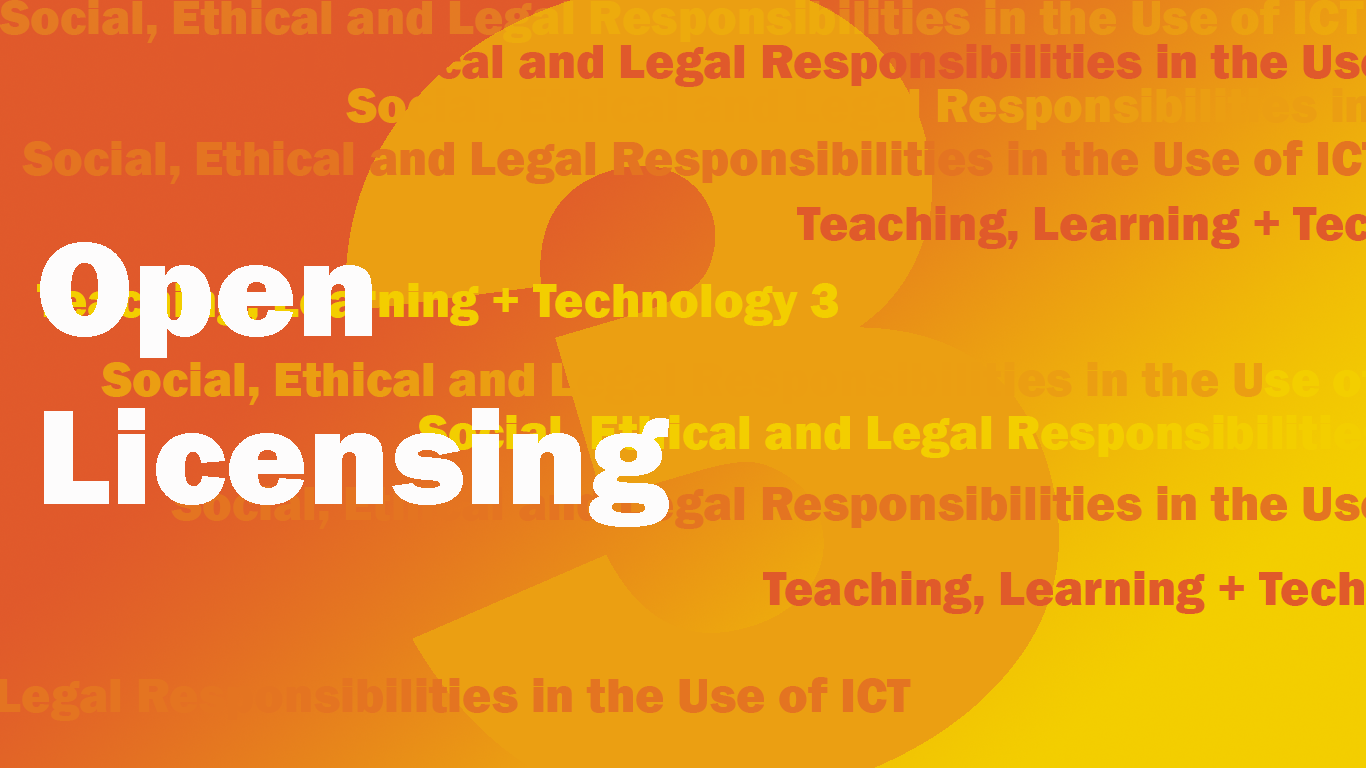Open Licensing
Copyright laws come with a licensing clause that gives authors the right to license their work for reuse. When the author is not traceable, the law provides mechanisms to obtain a licence from a designated authority.

Copyright laws come with a licensing clause that gives authors the right to license their work for reuse. When the author is not traceable, the law provides mechanisms to obtain a licence from a designated authority.
The term “copyleft,” a play on the word copyright, has often been used to refer to licensing systems that encourage openness. A mirrored © symbol is sometimes used to denote “copyleft.”
![]()
Over the last two decades, open-content licensing systems have been evolving and developing. Some have created sophisticated licensing options for authors. Some were initially established to support the release of open software, then were expanded to support the licensing of open content. Others focus exclusively on either software or content. The following are open licensing systems that you might encounter in your Internet searches:
- GNU General Public Licence (for software)
- GNU Free Documentation Licence (for manuals, texts)
- Open Publication Licence (content)
- Open Game Licence (computer games)
- Free Art Licence (art, images, graphics)
- Creative Commons (Content)
In the area of Open Educational Resources (OER), which focuses specifically on educational content, the Creative Commons licences are the ones most extensively used. Open education purists, however, are quick to point out that not all Creative Commons licences can be considered completely “open.” In the next segment, we will study the Creative Commons licence options and their degrees of openness.